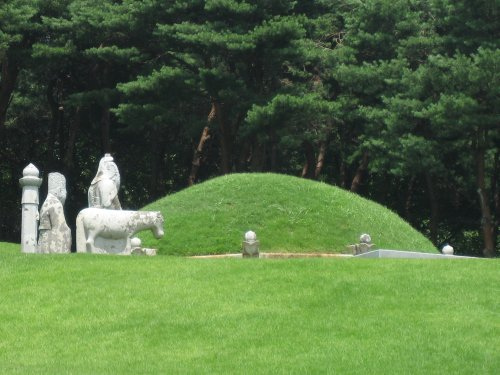The K-drama, The Red Sleeve, has won hearts everywhere with the story of Lee San and Seong Deok-im. Starring Lee Se-young and Lee Jun-ho, it is a must-see K-drama.
This post is a continuation of a 5-part series of Let's Dissect The Red Sleeve.
Image courtesy of Wikipedia.
Suwon Hwaseong Fortress
If you can recall, I mentioned the Hwaseong Fortress in my blog post regarding Lee San, most commonly known as King Jeongjo. The Hwaseong Fortress is an unbelievable structure that exemplifies great scientific planning and devotion. Even as I looked and flipped through the pictures of this amazing fortress, I was and still am in awe and hope that one day I'll be able to see this structure in person. It truly makes me fall in love with this particular historical king over and over again for his filial piety.
During King Jeongjo's reign, the Hwaseong Fortress was built from 1794 to 1796 in the center of the city of Suwon, which is located in Gyeonggi-do Province, just 19 miles south of Seoul. It is the second-largest municipality after Seoul and is easily accessible by subway and bus.
The structure of the fortress is 3.57 miles long and 13 to 20 feet high. Originally, the fortress walls were supposed to be 25 feet tall but due to budget shortages, they were dropped to 20 feet. The fortress was built on flat and hilly terrain, which makes parts of the wall shorter in height than in other parts.
Image courtesy of Wikipedia.
King Jeongjo had plans to move the capital to Suwon, but shortly after the completion of the fortress, he died and was unable to see these plans through. His plans for this fortress were for military purposes and to protect the city. Most importantly, he wanted to protect his father's tomb, which he had relocated to the foot of Mount Hwasan in Suwon in 1789.
The Long 8-Day Long Journey to Hwaseong Fortress
In 1795, King Jeongjo asked his mother, Lady Hyegyeong, to visit Crown Prince Sado's tomb. He made plans to not only visit his tomb but also celebrate her sixtieth birthday, which would've also been Prince Sado's sixtieth had he been alive.
In her Memoir of 1795, she recounts their visit to Prince Sado, where her son wept at his tomb. For the sake of her son, she held back her tears and King Jeongjo had also restrained himself so as not to worry his mother. In the previous year, the officials who attended the ancestral rites mentioned that King Jeongjo was overwhelmed by emotion and was not stable for several hours because of his overwhelming sadness.

Yungneung where the tombs of Crown Prince Sado and Princess Hyegyeong are located.
Image resource from London Korean Links
Before the procession to Crown Prince Sado's tomb, King Jeongjo had a banchado (반차도) drawn. A banchado was a painting that was done before an event took place. Down below, you can see a part of the banchado of the royal procession to Prince Sado's tomb.
Image courtesy of Contents History Go.
A UNESCO Heritage Site
The Hwaseong Fortress was damaged during the Japanese invasion, but much more significant damage was incurred as a consequence of the Korean War. In the 1970s, Korea worked towards rebuilding what was damaged. Fortunately, during the time when Hwaseong Fortress was being constructed, all activities related to it were well documented. The fortress was brought back almost identically to its original structure thanks to the Hwaseong Seongyeok Uigwe (Records of Hwaseong Fortress Construction), which was published in 1801, a year after King Jeongjo's death. Because of this Uigwe, a collection of records of royal activity, the Hwaseong Fortress was eligible and inscribed as a UNESCO World Heritage Site in December 1997.
I hope that you enjoyed this 5-part series on Let's Dissect the Red Sleeve!
What were your favorite things that you learned about these historical people and sites?
I look forward to hearing from you!
If you have missed the other posts for this 5-part series, here are the links below.
King Jeongo - Lady Hyegeong's son
Seong Deuk-im (Uibin Seong) - King Jeongo's beloved concubine
Lady Hyegyeong- Crown Prince Sado's wife
Crown Prince Sado - King Jeongjo's father
Seong Deuk-im (Uibin Seong) - King Jeongo's beloved concubine
Lady Hyegyeong- Crown Prince Sado's wife
Crown Prince Sado - King Jeongjo's father
XO,
혜원쌤
Laura









Post a Comment